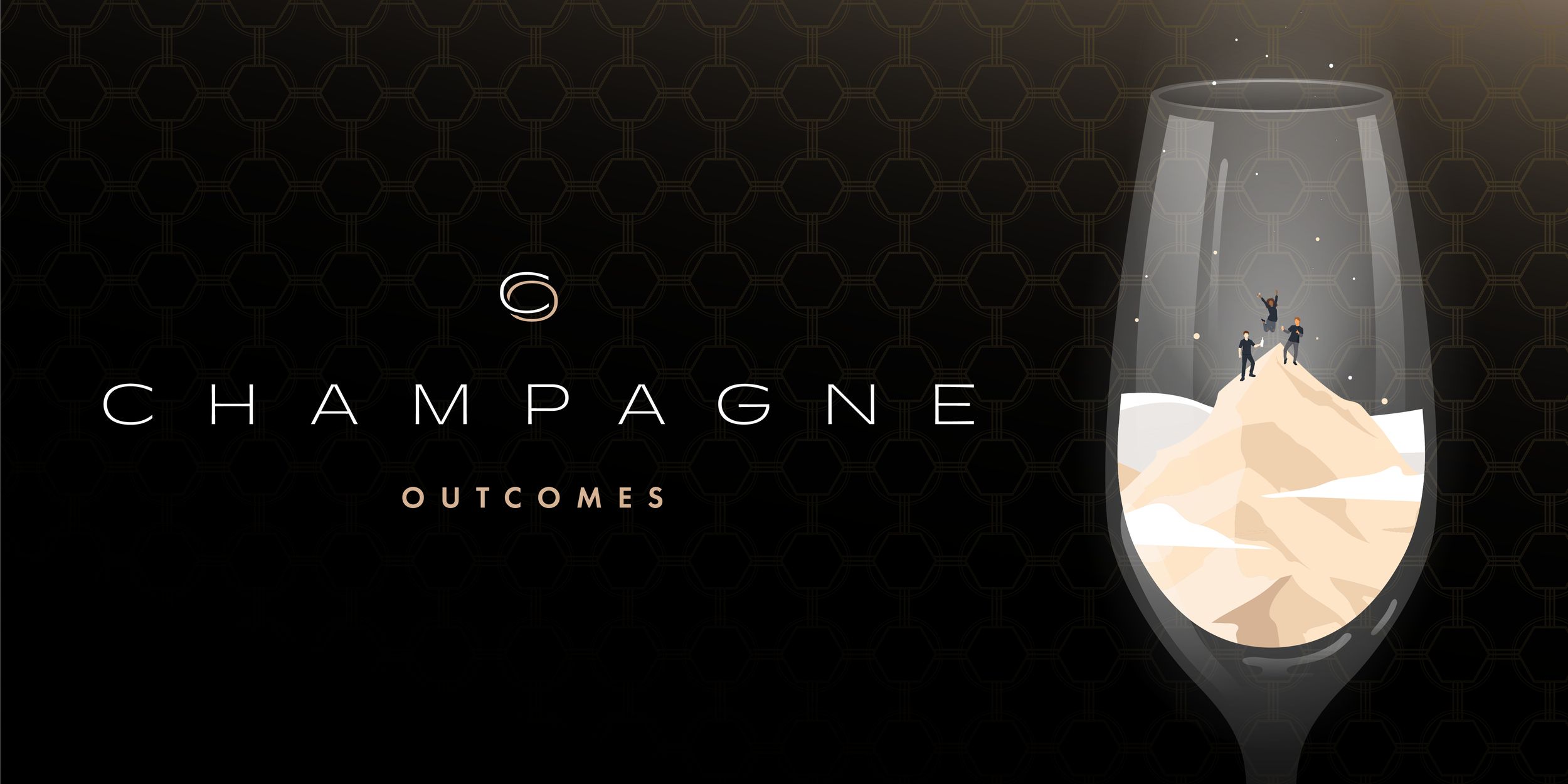What you measure gets done; what you celebrate gets repeated.
“What you measure gets done,” MBA-types are prone to say. We agree with this sentiment. In principle. But it’s incomplete.
True, what you measure gets done. But what you celebrate gets repeated.
When it comes to marketing, measurement is an obsession: conversion rates, advertising CAC (Customer Acquisition Cost), click-thrus, web traffic, SEO metrics, and the queen bee of them all: lead scoring. All of this analytics infrastructure has been built around one false belief: that if we can track the buyer hither and tither around the internet fast and well enough, if we can measure their every move, then we must be doing the right thing.
For the last 15 years, in marketing, stalking has been a virtue.
This kind of behavior and its attending KPIs at the center of marketing leaves us very little to celebrate. Marketing’s success measures are tied to short-term and often pedantic activities. Activities which—today—are buried in the dark. We live in a world where the most important buyer activity is unattributable. You’ll never see it in a dashboard.
70% of the buyer’s journey, by some measures, is hidden from you. As the now infamous Harvard Business Review article making the rounds has stated: all revenue operations “need to be rebuilt from the ground up.” A task that requires a fresh way of measuring. One that requires a little celebrating along the way:
Champagne Outcomes.
Outcomes Are a Process
Many business leaders treat their KPIs like finish lines or summits, like finding or accomplishing them means victory. When in fact, these tactics and their measurements are all meant to confront a specific problem and aid the brand’s wider outcomes.
Tactics alone cannot produce outcomes. Only strategy can.
We use the term Champagne Outcomes to describe the shit that’s worth celebrating, the stuff that everyone in RevOps (Marketing, Sales, Customer Experience) should be held in alignment to. If it’s not worth a bottle of Dom Perignon when you achieve it, it’s not worth reaching for. Champagne Outcomes are the big measures like
-
Revenue growth
-
Increased Customer Lifetime Value (LTV)
-
A repeatable All-In CAC/LTV Ratio
-
Long-term Subscriber numbers
-
Reduced churn (of employees and customers)
It takes well-strategized brand processes to achieve these outcomes, and marketing tactics only play one part of that process. The very best marketing tactics set out to solve a specific customer experience problem and are understood to play a role in the overall process that leads to Champagne Outcomes.
But when measure tactics stands in the way of attuning to outcomes (as it does in many mid-market companies), then the entirety of the marketing (and its perceived success) rests on thin legs and shaky backs, bound to finish the race far from first.
10 Steps for Achieving Champagne Outcomes
Okay, so let’s get down to ground level. You want your marketing department to work hard to solve for actual, real-business problems. How should you lead them through it, and how will it contribute to getting those cork-popping Champagne Outcomes?
Here’s our 10-step strategy:
1. Until you understand the problem, ignore the solutions.
More KPIs? A podcast? How about an emailed coupon or an ad buy? The second these solutions come across your desk, without a clear understanding of what they’re trying to solve, file it away and don’t pursue it. Solution-chasing kills brands.
2. Know your customer, not your idea of the customer.
Yes, really. A terrifying majority of businesses we talk with or observe, don’t actually know what their customers want. They just know what they THINK their customers want. Don’t be them. KNOW your customer.
3. Research their journey.
As we said, 70% of your customer’s journey is not being captured by your analytics. And most of that is invisible to the SMEs in the room who are SURE they know the customer. You cannot build customer journey without talking to customers (and pre-customers).
4. Get clear about outcomes.
As mentioned, outcomes are not KPIs. KPIs are what people use to feel like they are managing marketing. Marketing should be intimately tied to the Champagne Outcomes in all things.
5. NOW, clarify obstacles.
What are WE DOING (or not doing) that is actively standing in the way of our customers getting what they need from us. Marketing is fundamentally leadership, so remember the first question of leadership: “Who am I being in this situation that is producing the world the I see?”
6. Prioritize the problems.
List the obstacles in order of most disruptive to your outcomes to least. Pick one problem. No, we mean it. Pick one.
7. Zoom in.
Isolate how the problem is affecting the customer and what they need from you to solve it. Ask the service question: What are we doing (or not doing) that is disrupting the customer journey to produce this problem?
8. Brainstorm wildly.
Now the fruit of ignoring all the tactics is borne. You cannot brainstorm your BEST solution if you’ve already tried to shoehorn a decent solution in search of a problem. This step is best handled by someone trained in design thinking.
9. Isolate a strategy change.
Could be a new channel, a new resource, a new partner, or an overhaul of something old. Who knows. That’s why we brainstorm. But now we’ve got to pick the strategy change that we believe is best suited to solve this.
10. Research tactics and solution vendors.
Never, never, never until this point.
One Last Note on Champagne Outcomes
Following the 10 steps above will give you and your marketing team a strategy for how to find and solve marketing problems and help accomplish the larger goals you’ve set for your business or brand.
But we’d be remiss if we didn’t end with one last exhortation, especially as it relates to Champagne Outcomes.
We’ve witnessed too many leaders, teams, and brands missing opportunities to celebrate well, especially when big accomplishments get attained. We’re sad to say it’s even happened within our walls as well.
But as Brand Strategists, one of the things we try to do is keep an eye on elements of uncommon good that increase the health and vitality of a brand. We’re helping brands be more than just disruptors, rebels, or iconoclasts. We want to help them build a culture where doing these things results in a damn good party.
Remember that your best brand and marketing work is deeply culture making. It shifts what we value and what we celebrate, where we allocate power and resources and where we align for that all-important toast.
That’s why in 2022, it’s become a priority both internally and in our dealings with clients to make major milestones obvious and to commemorate them with worthy celebrations.
Toast to the magic.
When you need a hand aligning all your work to the Champagne Outcomes, give us a call. We’ll raise a glass with you.




